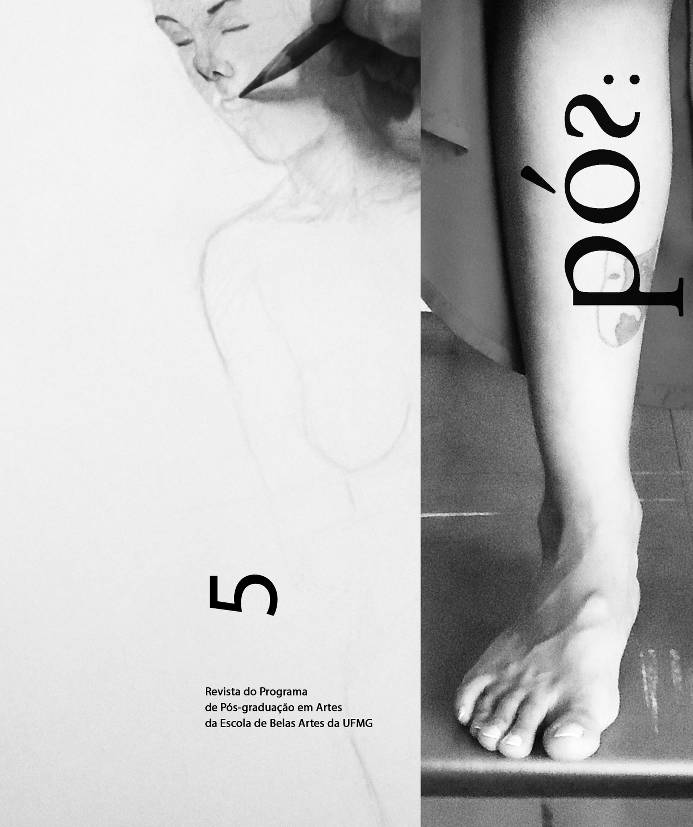Places to Go
Challenges to Multicultural Art Education in a Global Economy
DOI:
https://doi.org/10.35699/2238-2046..15474Resumo
O artigo examina a relação entre a atual fase da globalização e os desafios que ela apresenta para o multiculturalismo. O artigo explora os deslocamentos que ocorreram no campo da arte em razão da globalização e discute suas implicações para a arte/educação pós-moderna.Downloads
Referências
Appadurai. A. (1997).Modernity at large: Cultural dimensions of globalization. New Delhi: Oxford University Press.Araeen,R. (1987). From primitivism for ethnic arts. Third Text 1,25.Balfe, J. H. (I 987). Artworks as symbols in international politics. International Journal of Politics Culture and Society, 1(2), 5-27.Ballengee-Morris, C. (2002).Cultures for sale: Perspectives on colonialism and self-determinations and the relationship to authenticity and tourism. Studies in Art Education, 43(3), 232-245.Ballengee-Morris. C.,&Stuhr, P. L. (2001). Multicultural art and visual culture education in a changing world .Art Education, 54(4), 6-13.Banerjee, S. B.,&Linstead, S. A. (2001). Globalization, multiculturalism, and other fictions: Colonialism for the New Millennium? Organization, 8(4). 683-722.Bonami, F. (2003, November). Global tendencies: Globalism and the large-scale exhibition. ArtforumInternational pp.152-163,206.Cisler, S. (2001).Arts, crafts and globalization. Retrieved November 27, 2001 from http://switch.sjsu.edu/web/v5n3/A-1.htmlDavid, C. (2003, November). Global tendencies: Globalism and the large-scale exhibition. ArtforumInternational, pp.152-163,206.Delanty, G. (2000). Citizenship in a global age: Society, culture, politics. Buckingham: Open University Press.Dirlik, A.(1996). The global in the local. In. R. Wilson &W Dissanayake (Eds.), Globa/Local: Cultural production and transnational imaginary (pp. 21-45). Durham, NC: Duke University Press.Duncum, P. (2000). How art education an contribute to the globalization of culture. Journal of Art and Design, 19(2). 170-180.Duncum, P. (2001). Theoretical foundations for an art education of global culture and principles of classroom practice [Electronic version].International Journal of Education and the Arts, 2(3), 1-15.Efland, A., Freedman. K.,& Stuhr, P. (1996). Postmodern art education: An approach to curriculum. Reston, VA: National Art Education Association.
Enwezor, O. (2003). To-ing and Fro-ing: Interview with Karen Raney. Engage,13, 7-13.Freedman, K. (2003).Teaching visual culture: Curriculum, aesthetics and the social life of art. New York: Teachers College Press and Reston, VA;National Art Education Association.Friedman, T. (2000). The lexus and the olive tree.New York: Farrar, Straus, Giroux and Anchors Book.Giroux, H (1992). Border crossings: Cultural workers and the politics of education. New York: Routledge.Goldman, S. (1991). Metropolitan splendors. New Art Examiner, 18(8), 16-19.Grauer, K. (2002). Teenagers and their bedrooms. Visual Art Research, 28(2), 86-93.Grimes, K. M., & Milgram, L. B (2000) Artisans and cooperatives: Developing: alternate trade for the global economy. Tucson: University of Arizona Press.Hall, S. (1997). The local and the global: Globalization and ethnicity. In A. D. King (Ed.),Culture, globalization and the world-system: Contemporary conditions for the representation of identity (pp. 19-40). Minneapolis: University of Minnesota Press.Hannerz, U. (1996). Transnational connections: Culture, people, places. London: Routledge.Hearntney. E. (2003, December). Mending the Beach. ArtinAmerica, 75-79,118.Herkenhoff, P. (2003). Learning and dislearning to be global: Questions at44°53’N. 93° l3 ‘ Wand 22° 54’24’’S, 43° 10’21’’. W. In Walker Art Center (Eds.), How latitudes become forms: Art in the age of globalism (pp. 124 -129). Minneapolis: Walker Art Center.Jameson. F., &Miyoshi. M. (1998). (Eds.). The cultures of globalization. Durham, NC: and London: Duke University Press.Jordan, G.,&Weedon, C. (1995). Cultural politics. Class, gender, race and the postmodern world. Oxford: Blackwell.Kirshenblatt-Gimblett, B. (1998). Destination culture. Berkeley: University of California Press.
Muller, K. (2003). The culture of globalization. Museum News, 82(3), 34-39, 62-63, 66-67.NederveenPieterse, J. (1997). Multiculturalism and museums: Discourse about others in the age of globalization. Theory, Culture and Society, 14(4), 123-146.Said, E. (1979). Orientalism. New York: Vintage.Sassen, S. (1998) .Globalization and its discontents: Essays on the new mobility of people and money. New York: The New Press.Sadowski-Smith. C. (2002). Globalization on the line: Culture, capital and a. citizenship at U.Sborders New York: Palgrave.Shohat, E., &Sham. R. (1996). From the imperial family to the transnational imaginary: Media spectatorship in the age of globalization. In. R. Wilson &W. Dissanayake (Eds.), Globa/Local: Cultural production and transnational imaginary(pp. 145-170). Durham, NC:Duke University Press.Shonibare, Y. (2003, November). Global tendencies: Globalism and the large-scale exhibition. Artforum International, 152-163,206.Tavin, K. (2003). Wrestling with angels, searching for ghosts: Toward a critical pedagogy of visual culture. Studies in Art Education. 44(3), 197-213.Tavin, K., &Hausmam, J. (2004). Art education and visual culture in the age of globalization[Electronic version]. Art Education, 57(5). 1-7.Tomlinson, J. (1999). Globalization and culture. Chicago: The University of Chicago Press.Wallis, B. (1994). Selling nations: International exhibitions and cultural diplomacy. In D.Sherman & I. Rogoff (Eds.), Museum cultures: Histories, discourses, spectacles(pp. 265-282). Minneapolis: University of Minnesota Press.Walsh, M. (2001). Globalization and multiculturalism. Art Monthly, 249, 52-53.Yudice, G. (1996). Transnational cultural brokering of art. In G. Mosquera (Ed.). Beyond the fantastic: Contemporary art criticism from Latin America (pp. 196-215). Cambridge, MA: MIT Press
Downloads
Publicado
Edição
Seção
Licença
Copyright (c) 2013 Dipti Desai

Este trabalho está licenciado sob uma licença Creative Commons Attribution-NonCommercial 4.0 International License.
Autores que publicam nesta revista concordam com os seguintes termos:
- Autores mantém os direitos autorais e concedem à revista o direito de primeira publicação, com o trabalho simultaneamente licenciado sob a Creative Commons Attribution-NonCommercial 4.0 International License que permite o compartilhamento do trabalho com reconhecimento da autoria e publicação inicial nesta revista.
- Autores têm autorização para assumir contratos adicionais separadamente, para distribuição não-exclusiva da versão do trabalho publicada nesta revista (ex.: publicar em repositório institucional ou como capítulo de livro), com reconhecimento de autoria e publicação inicial nesta revista.
- Autores têm permissão e são estimulados a publicar e distribuir seu trabalho online (ex.: em repositórios institucionais ou na sua página pessoal) a qualquer ponto antes ou durante o processo editorial, já que isso pode gerar alterações produtivas, bem como aumentar o impacto e a citação do trabalho publicado
- É responsabilidade dos autores a obtenção da permissão por escrito para usar em seus artigos materiais protegidos por lei de Direitos Autorais. A Revista PÓS não é responsável por quebras de direitos autorais feitas por seus colaboradores.












